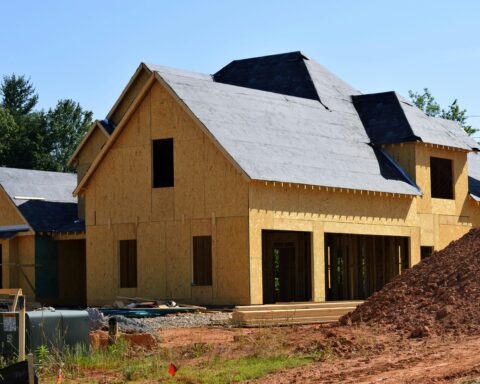The federal government is taking several steps to speed up the conversion of empty office buildings into viable residential space in the cities across the country. The initiatives address two intersecting economic trends: current drops in office occupancy rates due to hybrid work options and the growing need for single- and multi-family space in hotter job markets.
The steps are a continuation of the White House Housing Supply Action Plan, rolled out last year, which aims to lower the cost of building and preserving housing, particularly for lower- and middle-class households.
Fewer new homes were built in the decade following the Great Recession of 2007-2009 than any decade since the 1960s. That has led to a shortfall of more than 1.5 million homes nationwide, according to Moody’s Analytics. The availability of affordable rental homes for low-income households remains extremely tight, especially in Nevada, Florida, Oregon, Arizona and Texas, according to an April study of the National Low Income Housing Coalition.
At the same time, office vacancies currently are at a 30-year high of 18.2%, according to CBRE Research. Major lenders – Blackstone, Inc., Brookfield Corp. and Goldman Sachs Group Inc. – have defaulted or relinquished major office properties this year.
The idea of the commercial-to-residential conversion is to convert less-desirable empty office space into various residential options. It’s an idea that could take older commercial properties off the market and also prop up occupancy rates.
Federal funding available
Federal efforts to spark investment in the commercial-to-residential conversion space, according to the White House, will take a number of forms:
- The U.S. Department of Transportation has released guidance to encourage states, counties, cities and developers to use two low-cost financing programs to develop affordable housing near transportation projects: the Transportation Infrastructure Finance and Innovation Act, or TIFIA, and Railroad Rehabilitation & Improvement Financing, or RRIF, programs.
- Transit agencies also are encouraged to repurpose properties for transit-oriented development, or TOD, projects. New latitude will allow the agency to transfer properties to local governments, non-profit and for-profit developers.
- The U.S. Department of Housing and Urban Development, or HUD, has released an updated notice on how $10 billion in Community Development Block Grant (CDBG) funds can be used to boost the housing supply. Acquiring, rehabilitating and converting commercial properties to residential and mixed-use development are all approved strategies.
- HUD also will increase its outreach efforts to support developers and municipalities who want to pursue converting commercial properties. Localities can access up to five times their annual CDBG allocation in low-cost loan guarantees.
- The General Services Administration is expanding its Good Neighbor Program to promote the sale of surplus federal properties that can be redeveloped for residential use. GSA, in conjunction with the Office of Management and Budget, will identify current and upcoming sales opportunities and maintain a public list of opportunities. It will also list resources available to support housing development in the marketing materials for the applicable properties.
The White House also has released its Commercial to Residential Federal Resources Handbook. The handbook covers 20 federal programs across six federal agencies that can be used to support conversions. Programs include low-interest loans, loan guarantees, grants and tax incentives.
Market lifeline?
Matching the time and place for commercial-to-residential conversions could be a lifeline for the national real estate market, which has seen a small, but growing, number of defaults in key business corridors in cities such as San Francisco and Los Angeles.
Risk to the market appears to be growing. An estimated $1.2 trillion of current commercial property debt can be labeled as “potentially troubled,” according to a 2Q Capital Markets Report by the Newmark Group. According to Newmark’s estimates, office space accounts for about half of the $626 billion debt expected to mature by the end of 2025.
The commercial-to-residential conversion space, however, is a tough nut to crack in the current real estate market. An estimated 122,000 rental apartment units currently are in the pipeline nationwide for conversion, of which 45,000 are attributed to former office properties, according to an analysis by Rent Café, which reviewed Yardi Matrix data.
Moody’s Analytics analyzed the New York City Metro area for potential office-to-residential conversions. Of the 1,100 office buildings in the city, only 35 were viable candidates for residential conversion. That’s just 3% of the market. Most buildings were lesser Class B and Class C office properties that had less attractiveness on the commercial market.
Adaptive reuse of commercial buildings for residential use appeared to peak in 2019 and 2020, according to Rent Café’s analysis. The pool for residential conversion – office buildings cheap enough to make residential conversion attractive – still appears to remain small.
Pre-war office buildings, with smaller footplates, often make more sense for such conversions, which require features such as exterior-opening windows, in-unit bathrooms and kitchens, plus changes to floor-to-height ratios. Changing to HVAC systems also are typically required.
Trends suggest the conversion of hotel space into residential rental units is rising, while the conversion of existing office buildings has cooled.
Los Angeles, which led the nation in office-to-residential conversions in 2022, produced 692 additional apartment units, in Rent Café’s review. Cities with current conversions projects under way include Detroit, Cleveland, Atlanta and Houston.













